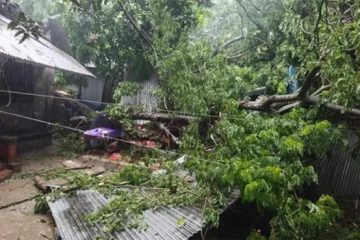Primitive signal system leads to frequent accidents; unsafe crossings make traffic movement in city risky
Most routes of Bangladesh Railway are very dangerous for travelling at present as the railway still depends on obsolete and dilapidated manual and semi-manual signalling system installed as far back as 1927.
Railway officials said use of the age-old route clearance system has increased scopes for human and mechanical failures, which caused some recent accidents. Traffic density has also increased in recent years, worsening the situation.
About 40 percent of the railway’s signalling system is manual and 43 percent semi-manual. The rest is operated through modern mechanisms like relay interlocking and computer-based systems.
There were three collisions last year. According to the railway information book, about 18 percent accidents in 2008 were due to “failure of human elements”. The collision near the Kamalapur Railway Station on June 22 this year was also the result of anomaly in the signalling system caused by human failure.
Condition of the routes in West Zone is particularly vulnerable because of the oldest signalling assets: about 38 stations in this zone have to depend on a signalling system that was installed in 1927. The Pakshi-Darshana and Abdulpur-Parbatipur routes have become the most risky for travelling.
Almost all stations in East Zone have comparatively modern technology named relay interlocking system, but installed between the mid-1960s and early ’70s, the system has already exceeded its 25-30 years’ lifespan.
These over-aged safety assets have increased the risk of signal failures and delays and need immediate maintenance, railway officials said.
Apart from being risky, the dilapidated condition of the country’s rail routes is failing to meet the need for speed and cope with the pressure of increased traffic density.
Trains cannot go beyond 16kmph around stations with manual interlocking mechanism while the highest approved speed limit around stations with semi-mechanised signalling system is 48kmph.
Moreover, in different sections the railway uses different signalling systems like non-interlocking, mechanical, electro-mechanical, single-wire and double-wire mechanical interlocking, relay interlocking and computer-based signalling systems.
Loco-masters often get confused because of this mixture of mechanisms. Uniformity in the signalling system is needed for easy operation, said officials.
The railway also lacks approach warning and road signals at numerous level crossings across the country. At present, the country’s rail route network has 1,403 level crossings, of which only 207 are manned round the clock.
Railway officials also have to face the curse of theft of interlocking apparatus on a regular basis.
The old manual interlocking system requires a lot of apparatus made of iron, which attracts petty thieves, said railway officials, adding that modernised system could prevent such theft.
Bangladesh Railway Director General Md Belayet Hossain told The Daily Star, “It is urgent to replace and modernise the signalling system at most stations and a large investment is needed for that. Bangladesh Railway is currently seeking funding for replacing and modernising the old signalling system in phases.”
Around 40 stations have been upgraded with computer-based signalling system since 2003, he said, adding that several replacement and modernisation projects for 40 stations on Sylhet-Akhaura, Dhaka-Joydevpur, Tongi-Bhairabbazar and Laksham-Chinkiastana routes are currently underway.
More projects are in the pipeline to replace the signalling system of 25 stations on Pakshi-Darshana and Chinkiastana-Chittagong routes, which will be completed during 2010-2015 with assistance from foreign donor agencies, Belayet said.




















